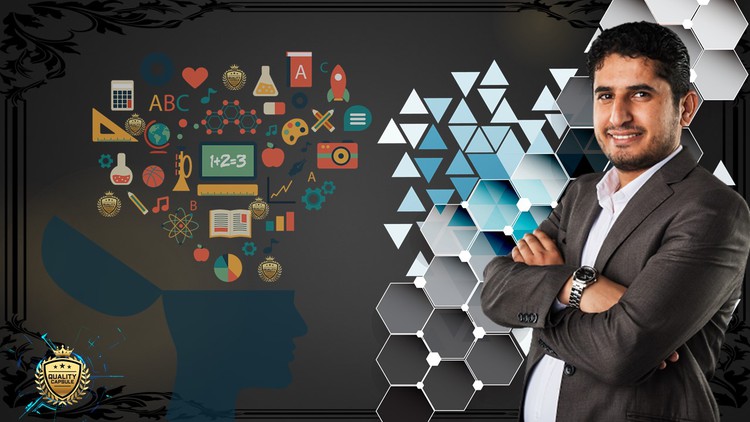Lean Waste Management: Strategies for Streamlining Processes
- Description
- Curriculum
- FAQ
- Reviews
Companies are always looking for new ways to improve business efficiency and increase quality. To run a business at optimal capacity, you need to reduce or eliminate waste from processes and improve production flow. In this course, you’ll learn about Lean strategies to reduce waste by determining which operations add value and which don’t. You’ll explore the concept of continuous flow, and discover how to balance work processes to make production flow more efficient. You’ll define what waste is, where it exists, and what causes it. You’ll also examine aspects of Muda, continuous flow, line balancing, value and non-value-add, and practical Lean techniques for improving Operations Management.
In the competitive business landscape, enhancing efficiency and boosting quality are crucial for staying ahead. To achieve operational excellence, it’s essential to identify and eliminate waste from your processes while optimizing production flow. Our comprehensive course on Lean Management provides you with the tools and strategies needed to streamline your operations effectively.
What Will You Learn?
-
Understanding Lean Strategies: Discover how Lean techniques can transform your business by pinpointing operations that add value versus those that do not. Learn how to implement continuous flow principles and balance work processes to enhance production efficiency.
-
Defining and Identifying Waste: Gain insights into the concept of waste in Lean Manufacturing. Understand the various forms of waste—time, materials, labor, skill-set underutilization, and poor planning—and how they affect your bottom line.
-
Exploring Lean Manufacturing Principles: Dive into the eight types of waste recognized in Lean Manufacturing, including the seven originally defined by the Toyota Production System and the additional waste introduced in Western adaptations. Learn how these wastes impact production processes and management practices.
Course Highlights:
-
Classify Production Activities: Learn how to categorize activities as value-add, non-value-add, or necessary non-value-add.
-
Eliminate Overproduction and Inventory Waste: Identify effective strategies to reduce waste caused by overproduction and excess inventory.
-
Reduce Motion, Waiting, and Transportation Waste: Discover actionable methods to minimize waste related to motion, waiting times, and transportation inefficiencies.
-
Tackle Overprocessing and Defects: Implement techniques to eliminate waste from overprocessing and defects in your production processes.
-
Match Cycle Time and Takt Time: Understand how to align cycle time and takt time with their practical applications in production.
-
Balance Production Lines: Master the final steps for effectively balancing a production line to maximize efficiency.
Why Choose This Course?
This Lean Management course offers practical, actionable insights to help you refine your operations and drive substantial improvements in efficiency. Whether you’re a business leader, operations manager, or quality improvement professional, this course will equip you with the knowledge and skills needed to excel in a Lean environment.
Enroll Now and Transform Your Operations!
Ready to revolutionize your approach to waste reduction and process optimization? Enroll in our Lean Management course today and start your journey towards a more efficient and productive business.
Keywords: Lean Management, Waste Reduction, Production Efficiency, Lean Manufacturing, Continuous Flow, Operational Excellence, Process Optimization, Production Line Balancing, Lean Techniques, Business Efficiency
Hashtags: #LeanManagement #WasteReduction #OperationalExcellence #ProcessOptimization #LeanManufacturing #ProductionEfficiency #ContinuousFlow #BusinessImprovement #QualityManagement
-
1Join Our Udemy Student CommunityVideo lesson
Join the Official Student Group:
We've created the Friends Instagram for you!
Along with being able to ask questions and get support in the Udemy course, this page is here for you to:
Ask questions
inspiring others
Share tips or tricks of your own
Support your fellow students
Stay up to date with course contests and updates
Watch live Q&A sessions
Feel free to follow all of the instructors on other social media as well:
https://linktr.ee/Islam_arid
Don't have Instagram? No problem! You will get support and updates right in this course as well. Just make sure your Udemy email notifications are turned on, so you get any updates!
See you in the group!
-
2Tips to Improve Your Course Taking ExperienceVideo lesson
-
3Call for course reviewText lesson
-
41-The Concept of WasteVideo lesson
waste is a core principle in lean methodology: the removal of waste within an operation. And in any business, one of the heaviest drains on profitability is waste.
-
52-Waste CategoriesVideo lesson
once you become familiar with the type and categories of waste, you will know where the waste exists more or less everywhere. and easily you will identify opportunities for improvement. So, once you identify the waste, you can improve that process by reducing or eliminating that waste.
we have three categories of waste:
Muda.
Mura.
Muri.
-
63-Types Of WasteVideo lesson
This acronym shows all seven types of waste other than the last one, which was the underutilization of people and machines.
Defects.
Overproduction.
Waiting.
Non-utilized talent.
Transportation.
Inventory.
Motion.
Extra-processing.
-
74-Defects WasteVideo lesson
Refer to a product that deviates from the standards of its design or from the customer’s expectation.
-
85- Overproduction WasteVideo lesson
when manufacturing a product or an element of the product before they are required by the next downstream process, overproduction occurs.
-
96- Waiting WasteVideo lesson
Waiting may also trigger additional waste in the form of defects if the waiting triggers a flurry of activity to “catch up” that results in standard work not being followed or shortcuts being taken.
-
107- Non-Utilized Talent WasteVideo lesson
it is the Waste of unused human talent and ingenuity.
it was not a part of the Toyota Production System (TPS), as it is human potential waste,not a manufacturing-process specific like other wastes,
-
118-Transportation WasteVideo lesson
Transportation waste is any unnecessary movement of people, tools, inventory, equipment, or products further than necessary.
-
129-Inventory wasteVideo lesson
Most of the time, it is difficult to think about excess inventory as waste.
In accounting, inventory is seen as an asset and oftentimes suppliers give discounts for bulk purchases.
Inventory is considered a form of waste because of the related holding costs.
That is why Over purchasing or poor forecasting and planning can lead to inventory waste also it is a signal a broken or poorly designed process link between manufacturing and purchasing/scheduling
-
1310-Motion WasteVideo lesson
All unnecessary motion results in non-value-added time and increases cost. That is why Tasks that require excessive motion should be redesigned to enhance the work of personnel and increase the health and safety levels
-
1411-Over-Processing WasteVideo lesson
Over-processing refers to doing more work, adding more components, or having more steps in a product or service than what is required by the customer.

External Links May Contain Affiliate Links read more





